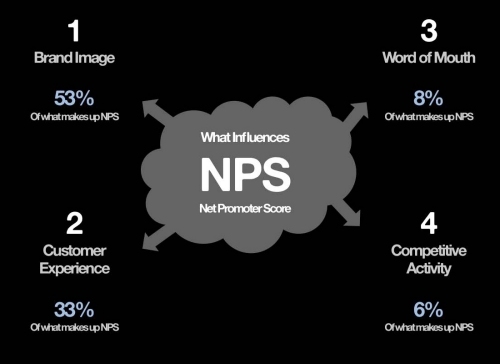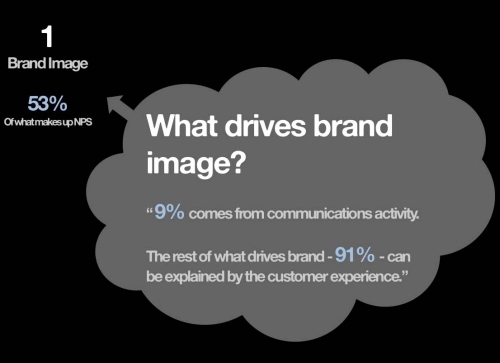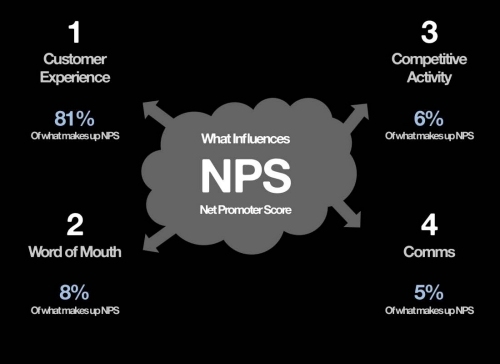James Hurman is on a mission to defend creativity as a business tool. Hurman, Planning Director at Colenso BBDO, one of New Zealand's most successful agencies and a regular winner of international effectiveness awards, recently launched a book called The Case for Creativity, plus an associated website. He has also taken to the conference stage to make his case, speaking at Spikes Asia in Singapore.
The Case for Creativity sets out two decades of research that show that creativity leads to effectiveness (read Warc's Speed Read summary of the book). The argument is that creativity is worth investing in – it is, in fact, a much better investment than non-creative communications.
Many of the studies Hurman cites, such as the work by Peter Field and Les Binet for the IPA in the UK, will be familiar to Warc readers, but Hurman adds to it with his own analysis of agency performance at Cannes and in Effie and IPA Effectiveness Awards. His finding was that agencies he deemed 'more creatively awarded' based on their performance at Cannes were two-and-half times as effective than 'less creatively awarded' agencies (in terms of number of effectiveness awards per $1 billion billed).
The findings are mostly from the US and Europe. In Asia, there's a common perception that there's little point risking money on highly creative strategies at a time when sales are growing anyway. "This is a kind of false economy," said Hurman. "In fact, with so much opportunity in terms of economic growth, you're best to be as creative as possible as you stand to drive extraordinary growth by being so."
To this end, much of his talk at Spikes Asia repeated the key points of the book. However, in a follow-up talk with BBDO, and in an interview with Warc, he went deeper into the role of creativity in business, and some of the ways it can drive results.
Creativity and innovation
Creativity goes much deeper than communications. In fact, the most successful marketers are creative across their business, not just in their marketing.
Hurman's starting point is the stock market performance of various brands that have won Cannes Advertiser of the Year in the past decade, among them Honda, Procter & Gamble and Volkswagen. For each one, the Cannes award, recognising creativity in communications, came at the same time as a boom in the company's share price.
An easy, but false, conclusion to draw would be that great advertising helped drive the stock market performance of these brands. A closer examination of the brands shows that each one at the time was undergoing a particularly strong period of innovation across the company. Take this quote from Jim Stengel, formerly the chief marketer at Procter & Gamble: "We'd been through the dark ages. And then we had the enlightenment. AG [Lafley, former P&G Chief Executive] was a wonderful leader and he said to all of us, you know, I want us to create, to innovate, to think differently. We'd do our management meetings in design firms. It was a period of great innovation across the company, and advertising was part of that."
That leads to Hurman's conclusion on the success of these companies: "It wasn't the ads so much, but that those companies were going through periods of great creativity in everything they were doing, and highly creative advertising was symptomatic of that – because they had very creative cultures, it meant that they were encouraging their agencies to produce very creative advertising."
Understanding that point opens up new directions for brands. Creativity is not something to be applied only to the narrow field of communications; it can be something much broader. And in fact, it's far more effective when it is.
Hurman used as an example McDonald's, and its attempts to throw off negative publicity in New Zealand arising from that country's growing levels of obesity. After a series of communications campaigns that had little impact, it took the decision in 2003, as in many other markets, to launch a range of salads.
As a result:
- 60% of New Zealanders said the salads made them feel more positive about McDonald's.
- The company saw double-digit sales growth, recording the second-highest sales result in 27 years.
- 40% of the increased sales came from the salads.
- 60% of the increased sales came from traditional McDonald's menu options.
"The salads sold OK," said Hurman. "But their real value to the McDonald's business was how they made people feel better about the rest of McDonald's products, and increased sales of the rest of the business."
The role of experience
The McDonald's case shows the role product innovation can play in driving brand equity. In fact, the link between creativity in a broad sense and business success is growing. Hurman points to evidence that attitudes toward advertising have hardened over the past decade. In a US study in 2006, 61% felt 'the amount of advertising is out of control', and 60% said they had a more negative opinion of advertising than they did a few years before.
Research from New Zealand backs up some of these findings. Many of Colenso BBDO's clients are now using the Net Promoter Score (NPS) as a key brand metric. One of those clients commissioned research to look at what factors drove consumers' NPS scores.
The initial findings were that 53% of NPS scores were determined by brand image, versus 33% by customer experience.

However, a closer look at what drives ideas of brand image found that 91% of this consideration was based on experience of the brand.

The conclusion, then, is that customer experience is by far the biggest driver of NPS scores. Brand communications is a minor player.

"NPS is driven almost entirely by the tangible aspects of the customer experience – actual product and service delivery – and virtually not at all by communications," said Hurman. "That isn't to say comms don't have a role, but rather that you can't rely on comms to drive brand performance. And if you look at those companies with very strong customer advocacy – the Apples and Virgins and Methods of the world – they're the ones that make sure their customer experience adheres to those creative fundamentals: original, engaging, brilliantly executed product and service experiences."
Different types of innovation
That conclusion means those in the creative industries should be taking a much broader approach to creativity and how it can be applied to brands. In particular, creativity in product and in service can make a huge difference to brand performance.
Hurman illustrates this point with three examples:
Westpac 'Impulse saver': One of Colenso BBDO's campaigns, this was a mobile app that allowed people to make 'Impulse savings' by pressing a big red button on their phone. The goal was to divert money that would go into impulse purchases into impulse savings – it was a product innovation rather than a communications campaign.
Best Buy 'Twelpforce': A service idea that used Twitter to connect consumers with Best Buy experts. It has driven down customer complaints and boosted sales. The initiative won Gold at the 2010 Jay Chiat Awards.
Tontine: The Australian pillow manufacturer started printing best-before dates on its pillows. It was a product innovation backed by short-term communications. Sales rocketed, as did brand metrics. The idea won the Grand Prix at the 2011 Australian Effies.
What's the point of marketers?
If effective creativity flows from something broader than a marketing brief, what is the role of marketers – and by extension agencies – in developing creativity?
Hurman argues that they still have a role to play, but they need to see themselves differently. "What agencies, and, to a large extent, marketers, have a good grasp of is the value of creative fundamentals – originality, engagement and great execution. The issue is that we tend to see these things as the premise of communications, as opposed to product, service or customer experience.
"But what the brands that we all look up to have always understood is that to truly build value into our offering we need to be original and engaging and brilliantly executed across the whole customer experience. I really believe we can drive even more impressive commercial results when we're creative not only with the comms, but also with the tangible aspects of the customer experience."
He added: "I think what we'll see more and more of in coming years at both Cannes and the Effies is work like Best Buy's 'Twelpforce', Tontine's pillows and Westpac's 'Impulse saver' – these are all creative ideas for product or service or customer experience, and these will be the sorts of ideas that move brands forward in future."
The shift in emphasis will place major demands on agencies, and BBDO is currently working with a PHD student on a global study into how to develop a creative culture that can respond to these needs. Colenso BBDO is an example of an agency that consistently wins awards both for creativity and effectiveness. Is there a secret to combining the two?
"Whatever your role, be it suit, creative, planner, production person, whatever – you need to figure out how to do it in a way that makes the work turn out better," said Hurman. "In suiting that's about fostering the kind of client relationship that accepts very creative ideas. In planning it's about developing strategy that isn't only 'right' but is also the kind of thinking that leads to great ideas, rather than complicating or hindering the creative thinking. Beyond that I think it's just about constantly reminding everyone – clients and staff – of the value of creativity."
 | David Tiltman is Warc's International Editor. He has been writing about media and marketing for more than a decade, including six years at Haymarket Media Group. There he was features editor on Marketing magazine, based in London, before moving to the Hong Kong Office to become Managing Editor of Haymarket's Media magazine (now Campaign Asia), covering marketing and media across Asia-Pacific. |
No comments:
Post a Comment